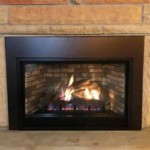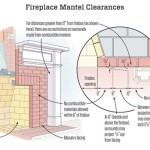Rock Tile Fireplace: A Timeless and Versatile Design Choice
A rock tile fireplace represents a significant design element, capable of transforming the ambiance of a living space. The selection of rock tiles, their arrangement, and the overall integration with the surrounding architecture contribute to the unique character of the fireplace. This article explores the various aspects of rock tile fireplaces, from material choices to design considerations, offering a comprehensive overview for homeowners and design professionals alike.
The enduring appeal of rock tile fireplaces lies in their inherent connection to natural materials and their ability to evoke a sense of warmth and permanence. Unlike more contemporary or minimalist fireplace designs, rock tile fireplaces often incorporate textures and colors found in nature, lending a rustic or organic feel to the room. The versatility of rock tile allows it to be adapted to various architectural styles, from traditional to modern, making it a popular choice for a wide range of homeowners.
Material Selection for Rock Tile Fireplaces
The selection of rock tile is a crucial step in the design process. The type of rock chosen will significantly impact the aesthetic and functional characteristics of the fireplace. Several factors, including durability, heat resistance, color, texture, and cost, should be carefully considered.
One common type of rock used for fireplace tiling is slate. Slate is a fine-grained metamorphic rock known for its durability and distinctive layered appearance. It is relatively heat resistant and comes in a variety of colors, including gray, black, green, and purple. Slate tiles can be cut into various shapes and sizes, allowing for diverse design possibilities. However, slate can be prone to chipping, especially if subjected to heavy impact, and requires proper sealing to prevent staining.
Another popular choice is river rock. River rock, as the name suggests, consists of rounded stones that have been smoothed by the action of water. These stones are typically sourced from riverbeds and come in a variety of sizes, shapes, and colors. River rock fireplaces offer a distinctly rustic and natural look, and their uneven surfaces add texture and visual interest. Installing river rock can be more challenging than installing other types of tile, as each stone must be individually fitted and secured. Furthermore, the porous nature of some river rock varieties may require sealing to protect against moisture and staining.
Ledgestone is another widely used material, characterized by its thin, stacked appearance. Ledgestone tiles are typically made from natural stone fragments adhered to a mesh backing, making them relatively easy to install. They offer a textured, three-dimensional look and are available in a range of colors and stone types, including granite, quartzite, and sandstone. Ledgestone can be used to create a dramatic and visually appealing fireplace surround; however, it's crucial to ensure that the adhesive used is specifically designed for high-temperature applications.
Finally, manufactured stone veneer represents a cost-effective alternative to natural stone. These veneers are made from concrete or other materials that are molded to resemble natural stone. Manufactured stone veneer offers several advantages, including lower cost, lighter weight, and consistent color and texture. They are also easier to install than natural stone. However, manufactured stone veneer may not possess the same level of durability or authenticity as natural stone, and its appearance may be less visually appealing to some.
Design Considerations for Rock Tile Fireplaces
Beyond the selection of rock tile, several design considerations must be addressed to create a visually appealing and functional rock tile fireplace. These considerations include the size and shape of the fireplace surround, the layout of the tiles, the integration with the surrounding architectural elements, and the overall style of the room.
The size and shape of the fireplace surround will depend on the dimensions of the room and the desired focal point. A larger fireplace surround can create a dramatic and imposing presence, while a smaller surround may be more suitable for a cozier, more intimate space. The shape of the surround can be rectangular, square, arched, or even custom-designed to complement the architectural style of the home. It's important to consider the proportions of the fireplace surround in relation to the size of the room and the other furniture within it.
The layout of the tiles is another crucial design element. The tiles can be arranged in a variety of patterns, including stacked, staggered, or random. Stacked patterns create a clean and contemporary look, while staggered patterns offer a more relaxed and informal feel. Random patterns, where tiles of different sizes and shapes are mixed together, can create a visually interesting and unique design. The layout of the tiles should be carefully considered to ensure that it complements the overall style of the fireplace and the room.
Integration with the surrounding architectural elements is essential for creating a cohesive design. The rock tile fireplace should be integrated seamlessly with the walls, flooring, and other features of the room. The color and texture of the rock tile should complement the colors and textures of the surrounding materials. For example, a rock tile fireplace with warm earth tones may be well-suited for a room with hardwood floors and natural wood furniture. Conversely, a rock tile fireplace with cool gray tones may complement a more contemporary room with concrete floors and stainless steel accents.
The overall style of the room should also be considered when designing a rock tile fireplace. The fireplace should complement the overall aesthetic of the room, whether it is traditional, modern, rustic, or eclectic. A rustic-style room may benefit from a river rock fireplace with exposed wood beams, while a modern room may be better suited for a sleek and minimalist fireplace surround with ledgestone tiles. The choice of materials, colors, and patterns should all be consistent with the overall style of the room.
Consider the height and width of the fireplace. A fireplace that is too tall or too wide can overwhelm a room, while one that is too small may get lost. A good rule of thumb is to keep the fireplace proportional to the size of the wall and the height of the ceiling. Additionally, the depth of the fireplace can affect how far it protrudes into the room. Ensure adequate clearance for furniture and walkways.
Installation and Maintenance of Rock Tile Fireplaces
The installation of a rock tile fireplace requires careful planning and execution. Proper preparation of the substrate, selection of appropriate adhesives and grouts, and precise tile placement are essential for a successful installation. While some homeowners may choose to tackle the installation themselves, it is often advisable to hire a professional installer, especially for complex designs or when working with natural stone.
Before installing the rock tile, the substrate, which is typically a concrete or cement board, must be properly prepared. The substrate should be clean, dry, and level. Any cracks or imperfections should be repaired before proceeding. A moisture barrier may be necessary to protect the substrate from moisture damage. The substrate should also be primed with a bonding agent to improve adhesion of the tile.
The selection of appropriate adhesives and grouts is crucial for ensuring the long-term durability of the rock tile fireplace. The adhesive should be specifically designed for use with the type of rock being installed and should be heat resistant. The grout should also be heat resistant and should be compatible with the color and texture of the tile. The grout lines should be carefully filled and sealed to prevent moisture penetration.
Precise tile placement is essential for creating a visually appealing and structurally sound rock tile fireplace. The tiles should be carefully measured and cut to fit around the firebox and any other architectural features. The tiles should be installed with consistent grout lines and should be level and plumb. Any irregularities in the tile surface should be addressed during installation to ensure a smooth and even finish.
Proper maintenance is essential for preserving the beauty and functionality of a rock tile fireplace. Regular cleaning with a mild detergent and water will help to remove dust and dirt. Avoid using harsh chemicals or abrasive cleaners, as these can damage the tile surface. Sealing the tile and grout will help to protect against staining and moisture penetration. Periodic inspection of the fireplace for cracks or other damage is also recommended. Any necessary repairs should be made promptly to prevent further deterioration.
In addition to regular cleaning, it's important to inspect the mortar joints periodically. Over time, the mortar can crack or crumble due to heat and exposure to the elements. If you notice any damage, it's important to repair it promptly to prevent further deterioration. This may involve re-pointing the mortar joints or, in more severe cases, replacing sections of the fireplace.
It's also wise to regularly inspect the chimney for any signs of damage or blockage. A buildup of creosote, a flammable byproduct of burning wood, can pose a fire hazard. Have the chimney professionally cleaned at least once a year, or more frequently if you use the fireplace often. This will help to ensure safe and efficient operation of the fireplace.

Natural Stacked Stone Veneer Fireplace Ideas

Modern Fireplace Wall Surround Tiles The Tile

Modern Fireplace Wall Surround Tiles The Tile
.jpg?strip=all)
Tips And Tools For Professional Stacked Stone Fireplaces

Virginia Ledge Cape Cod Grey Stone Veneer Fireplace Stacked Fireplaces Tile

The Tile Design By Kirsty 9 12 16 Stone Fireplace Remodel

11 Stone Veneer Fireplace Surround Design Trends Where To Buy

Thin Stone Veneers Make A Fireplace Update Easy Swenson Granite 100 Natural Stones

Is A Cozy Stacked Stone Fireplace Your Next Dream Project

Fireplace Stone On Edmonton Calgary S
Related Posts








